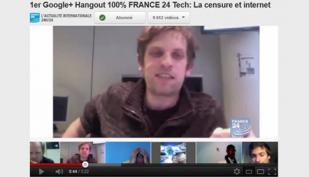Digital
Digital
The emergence of user-generated content, social media networks and new technology has radically changed journalism. Information circulates more quickly, sources are more varied and journalists are no longer the only ones documenting events. Facebook, Twitter, YouTube and camera phones have challenged this monopoly on information. How can journalists adapt to these new challenges and remain at the centre of information?
Internet is truly an information mine for journalists. Witnesses, experts, images and exclusive news are within reach of journalists who know the right paths on the net. Learn how to master this henceforth essential environment for every journalist.
Course objectives:
- Learn how to design a participative journalism programme
- Enhance your editorial offer using the web
- Know social network and their way to function
- Learn how to make the diff erence between rumor and news
Content:
- Learn how to make the diff erence between rumor and news
- Obtain information, witnesses, experts, on these networks
- Revamping amateur images to make them more attractive for television viewersVerify information on the internet.
Teaching method: Lecture illustrated with real cases; Simulation exercises
Target audience: journalists and news editors
Maximum number of participants: 10
Typical course length: 5 days
Location: Onsite
Understanding referencing and the best use of social networks is unavoidable to reach one's audience. Make sure you have a good position within the search engines like Google, thanks to optimization of url and a bunch of writing technics. On Facebook, Twitter and Google plus, learn how to develop your presence in order to increase your audience and to know your public better.
Content:
- Create one's own Facebook page : news, programs, special events
- Feed Twitter : THE reference for breaking news
- The blog : Find one's angle, a singular writing
- Promote, accompany special events
- Write to be a hook for search engines
- Elementary tools for audience measurement and web marketing
Target audience: journalists and news editors
Maximum number of participants: 10
Typical course length: 5 days
Location: Onsite
Internet has opened the door on new ways to consume news, combined to new production tools. These tools, often free, give the opportunity to tell the news combining mediums and varying temporality.
Content:
- Short texts containing a point of view, to do quick and clear
- Utilize the multimedia to tell stories : Organize photos, videos, sound and text.
- The blog : Find one's angle, a singular writing
- Create sound slideshow
- The breaking news : on the mobile, by mail, using Twitter
- The smartphone : the easiest tool
Target audience: journalists and news editors
Maximum number of participants: 10
Typical course length: 5 days
Location: Onsite
FRANCE 24 is the first international news channel to have launched a participative programme using amateur images only, developing an original programme with 'The Observers' site as inspiration.
The Académie's specialists can help every step of the way – from the programme's initial design to the test or pilot episode.
Course objectives:
- Learn how to design a participative journalism programme
- Know how to build a reliable network with a high contributory value
- Produce a test or pilot episode
Content :
- Finding the right contributors
- Interviewing via webcam
- Techniques for generating loyalty
- Revamping amateur images to make them more attractive for television viewers
- Counterbalancing witness subjectivity
Teaching method:
Design and production of a participative programme test / pilot episode.
Target audience: journalists and news editors
Maximum number of participants: 10
Typical course length: 5 jours
Location: Onsite
These short audio or video programs represent a fun declination for your website. Take advantage of a multitude of tools available on the net for free or a low cost. Learn how to master these tools to create new formats and reach new publics.
Content:
- Create and broadcast audio and video contents on the internet
- Publish them on iTunes, YouTube and SoundClound, audio video sharing networks.
- The blog : Find one's angle, a singular writing
- Create sound slideshow
- The breaking news : on the mobile, by mail, using Twitter
- Specific referencing and marketing for this type of content
Target audience: journalists and news editors
Maximum number of participants: 10
Typical course length: 5 days
Location: Onsite





